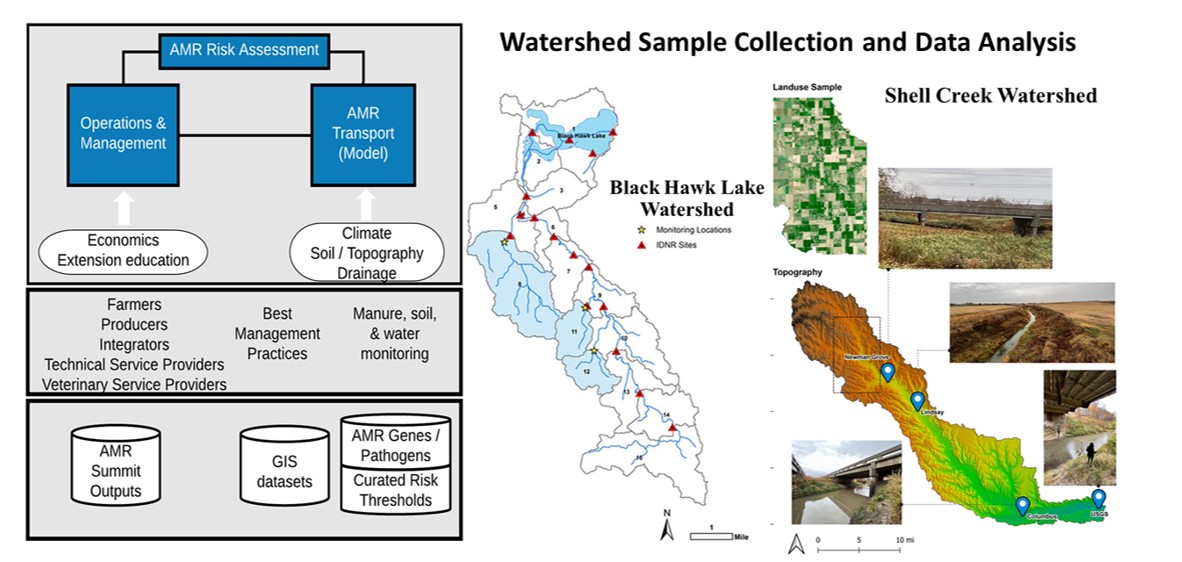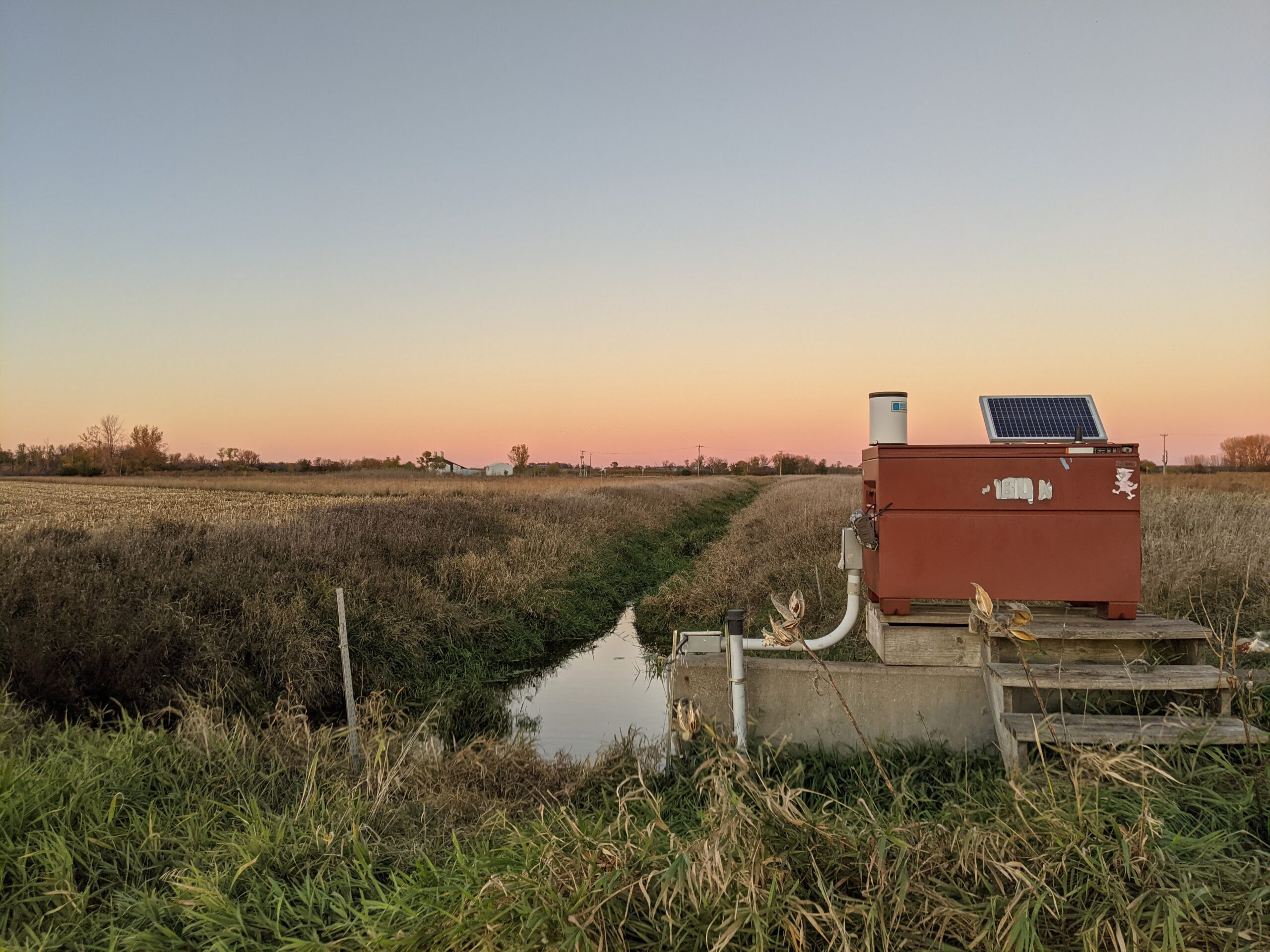CAMRADES
Connecting Anti-Microbial Resistance, Agricultural Decisions, and Environmental Systems
Antimicrobial Resistance (AMR) has been recognized as “One-Health” issue impacting health of people, animals, and the environment. Minimizing its impact requires an interdisciplinary approach involving natural, biological and social aspects to counter the associated risks. The project aims to develop an adaptable framework to assess the effectiveness of various anti-microbial resistance (AMR) mitigation strategies in agro-ecosystems by integrating predictive models of AMR transport through the following objectives:
- Characterize and predict transport of AMR targets via surface and subsurface pathways in agro-ecosystems.
- Integrate results into a novel adaptable framework (CAMRADES) to assess risk associated with transport of AMR through agricultural environments as a result of agricultural practices.
- Improve knowledge of AMR-related risks and inspire adoption of practices among food producers to combat AMR-related health and food safety risks associated with agro-ecosystems.

NWQI
National Water Quality Initiative
The purpose of this NWQI project is the collection, analysis, and evaluation of water quantity and quality monitoring data in the Black Hawk Lake (BHL) watershed. The data collected will be used to determine if pollutant load reduction strategies have been effective, and to quantify long-term water quality trends before, during, and after active best management practice (BMP) implementation efforts. Phase 1 was completed in 2019, with a goal to answer the questions, “Are water quality improvement strategies in the Black Hawk Lake Watershed positively impacting water quality?”. Phase 2 (2020-2024) expands on the Phase I monitoring to provide additional water quality and quantity data in paired watersheds and addresses the following objectives:
- Assess the relative benefit of implementing a CREP wetland compared to a subwatershed with existing high percentage of land in BMPs
- Track changes in implementation of BMPs, and the impact on water quality
- Compare the benefits of a single CREP wetland downstream to benefits with stacked practices
